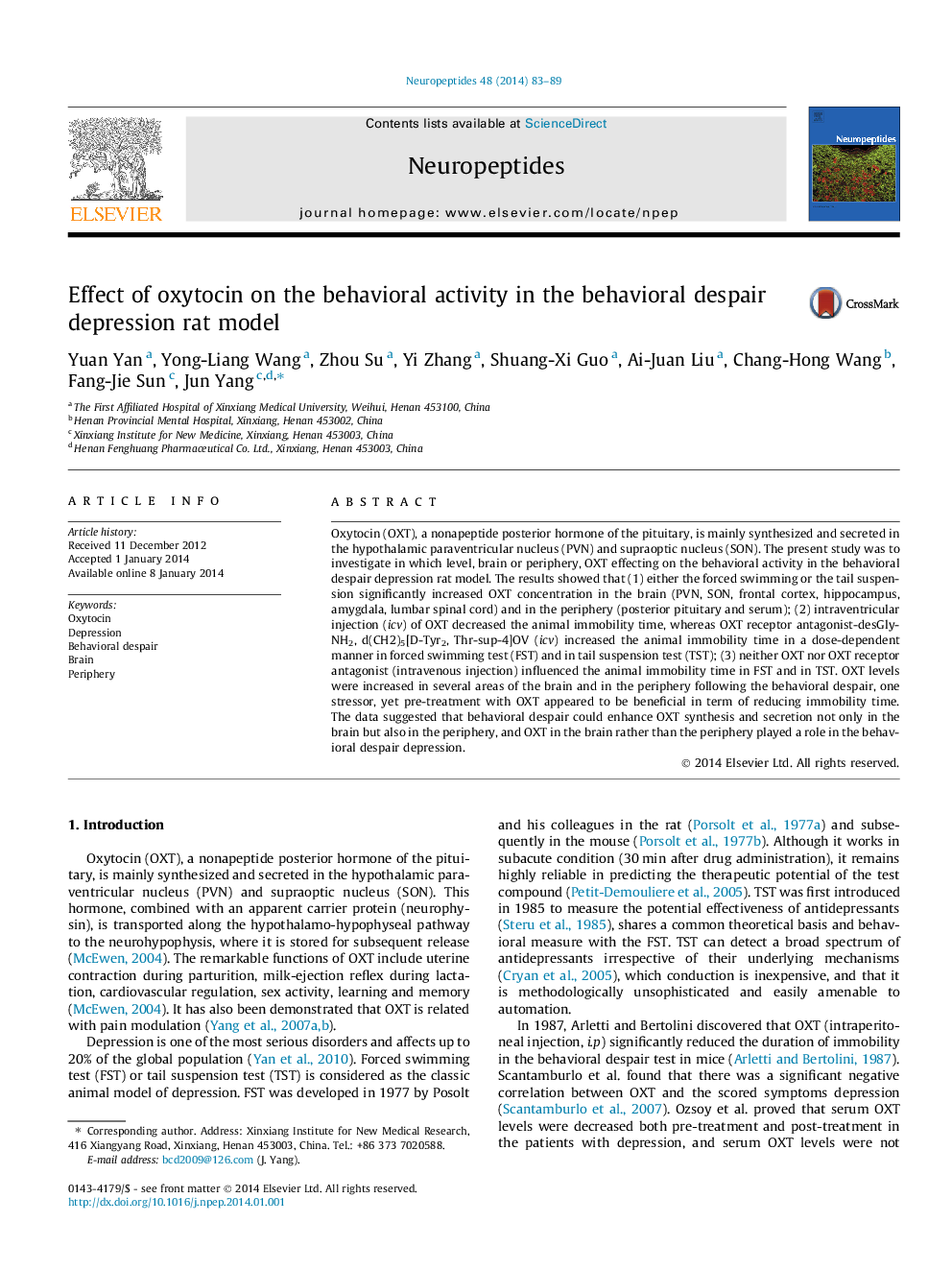| کد مقاله | کد نشریه | سال انتشار | مقاله انگلیسی | نسخه تمام متن |
|---|---|---|---|---|
| 2808080 | 1157729 | 2014 | 7 صفحه PDF | دانلود رایگان |
Oxytocin (OXT), a nonapeptide posterior hormone of the pituitary, is mainly synthesized and secreted in the hypothalamic paraventricular nucleus (PVN) and supraoptic nucleus (SON). The present study was to investigate in which level, brain or periphery, OXT effecting on the behavioral activity in the behavioral despair depression rat model. The results showed that (1) either the forced swimming or the tail suspension significantly increased OXT concentration in the brain (PVN, SON, frontal cortex, hippocampus, amygdala, lumbar spinal cord) and in the periphery (posterior pituitary and serum); (2) intraventricular injection (icv) of OXT decreased the animal immobility time, whereas OXT receptor antagonist-desGly-NH2, d(CH2)5[D-Tyr2, Thr-sup-4]OV (icv) increased the animal immobility time in a dose-dependent manner in forced swimming test (FST) and in tail suspension test (TST); (3) neither OXT nor OXT receptor antagonist (intravenous injection) influenced the animal immobility time in FST and in TST. OXT levels were increased in several areas of the brain and in the periphery following the behavioral despair, one stressor, yet pre-treatment with OXT appeared to be beneficial in term of reducing immobility time. The data suggested that behavioral despair could enhance OXT synthesis and secretion not only in the brain but also in the periphery, and OXT in the brain rather than the periphery played a role in the behavioral despair depression.
Journal: Neuropeptides - Volume 48, Issue 2, April 2014, Pages 83–89
